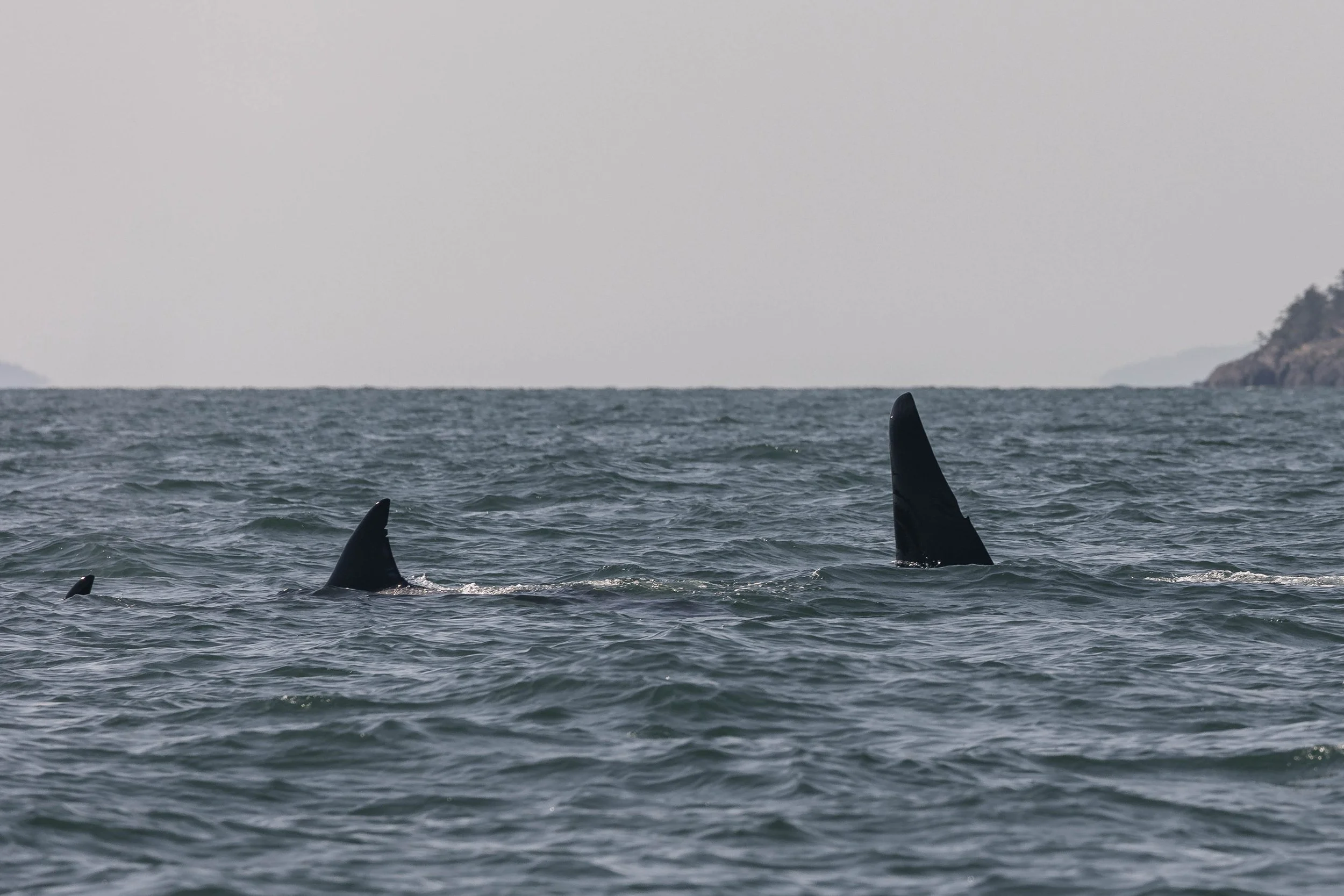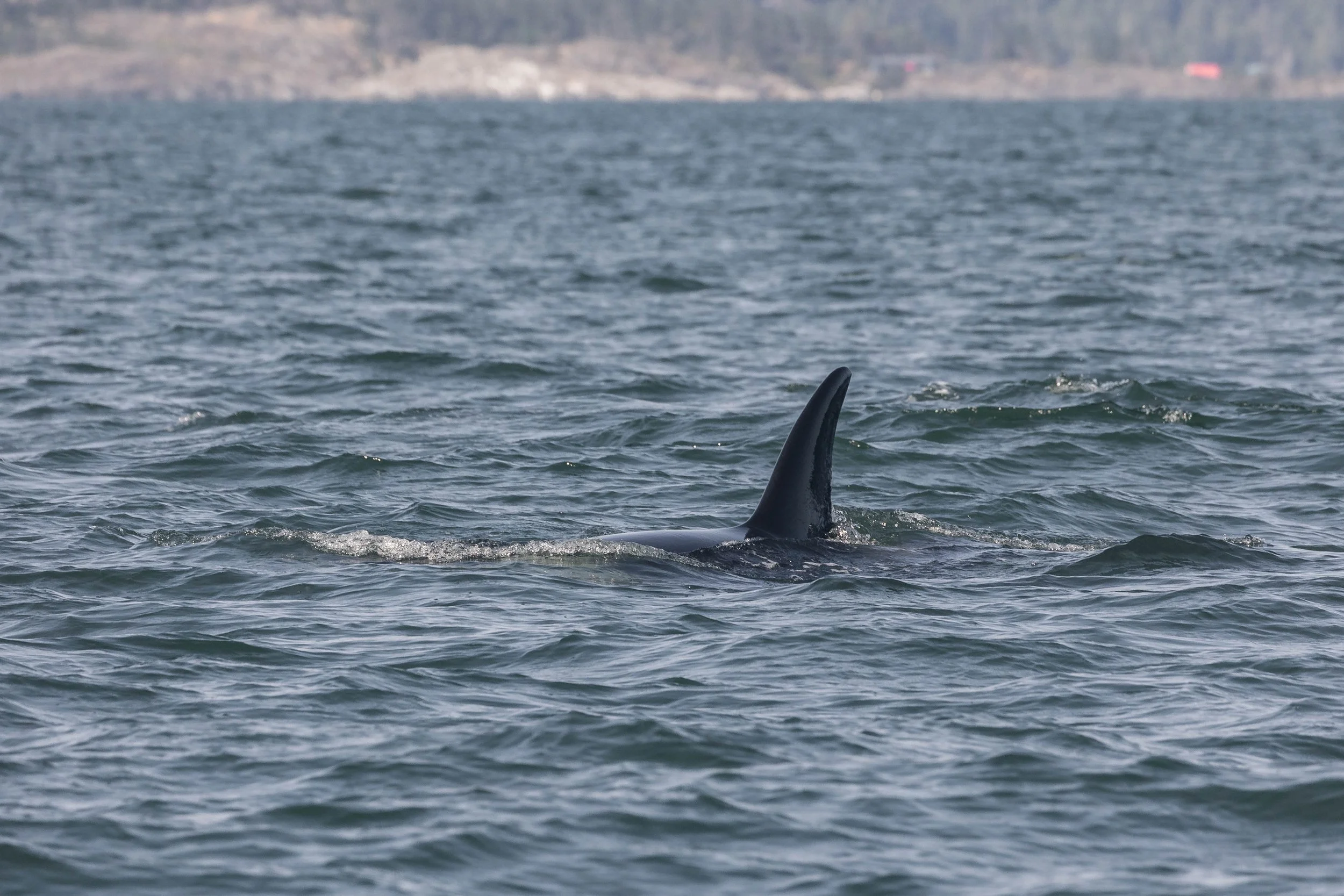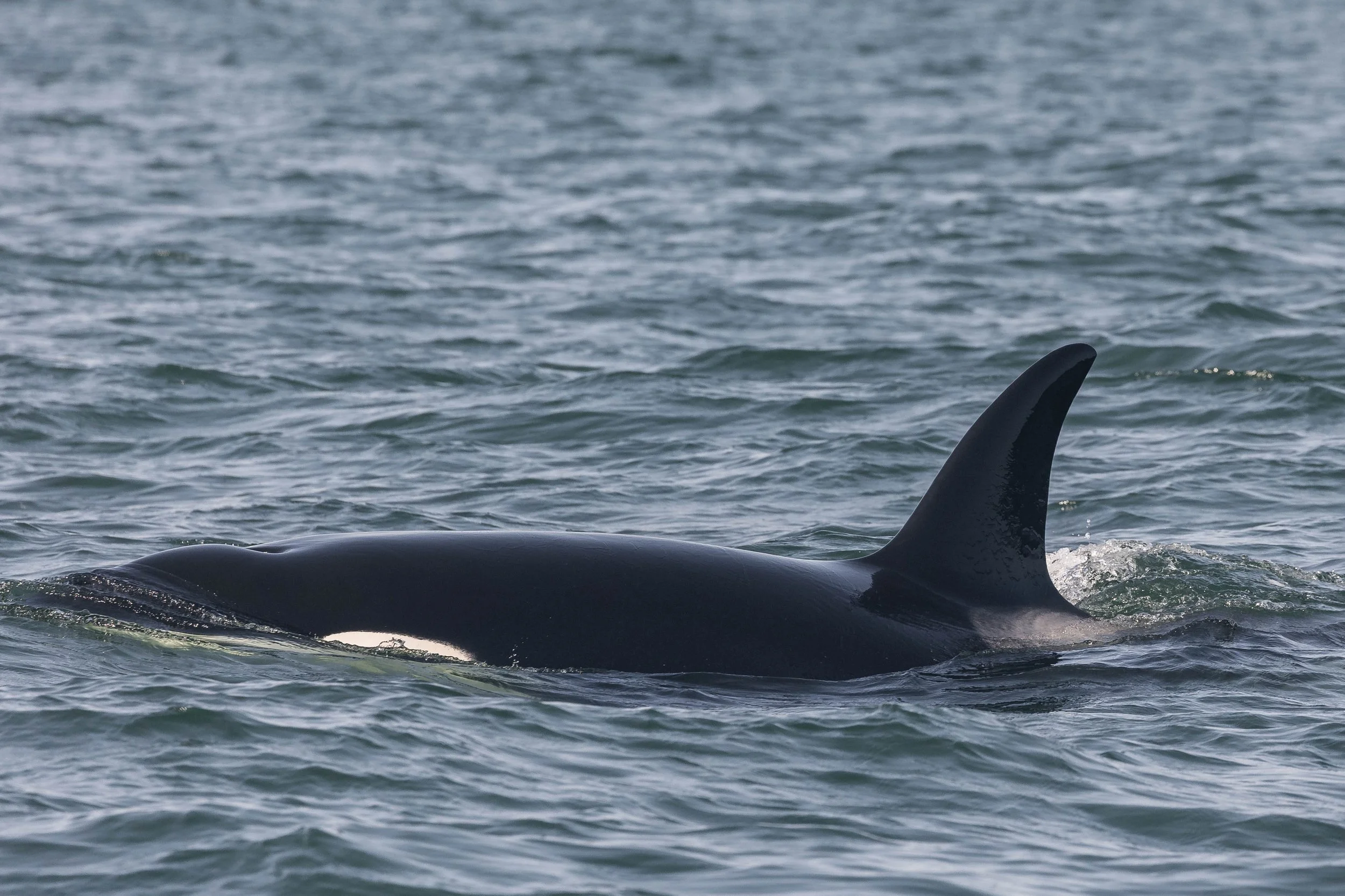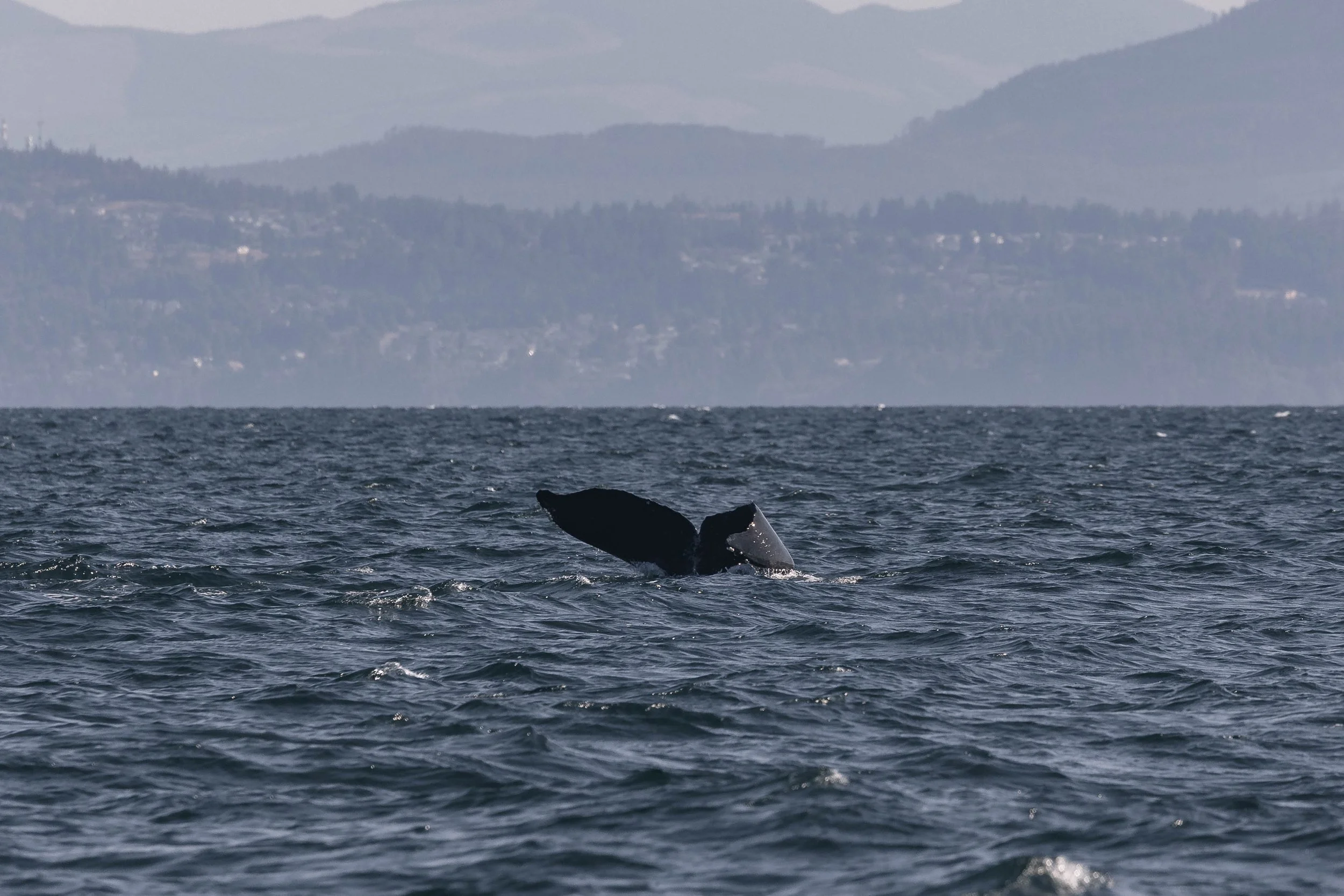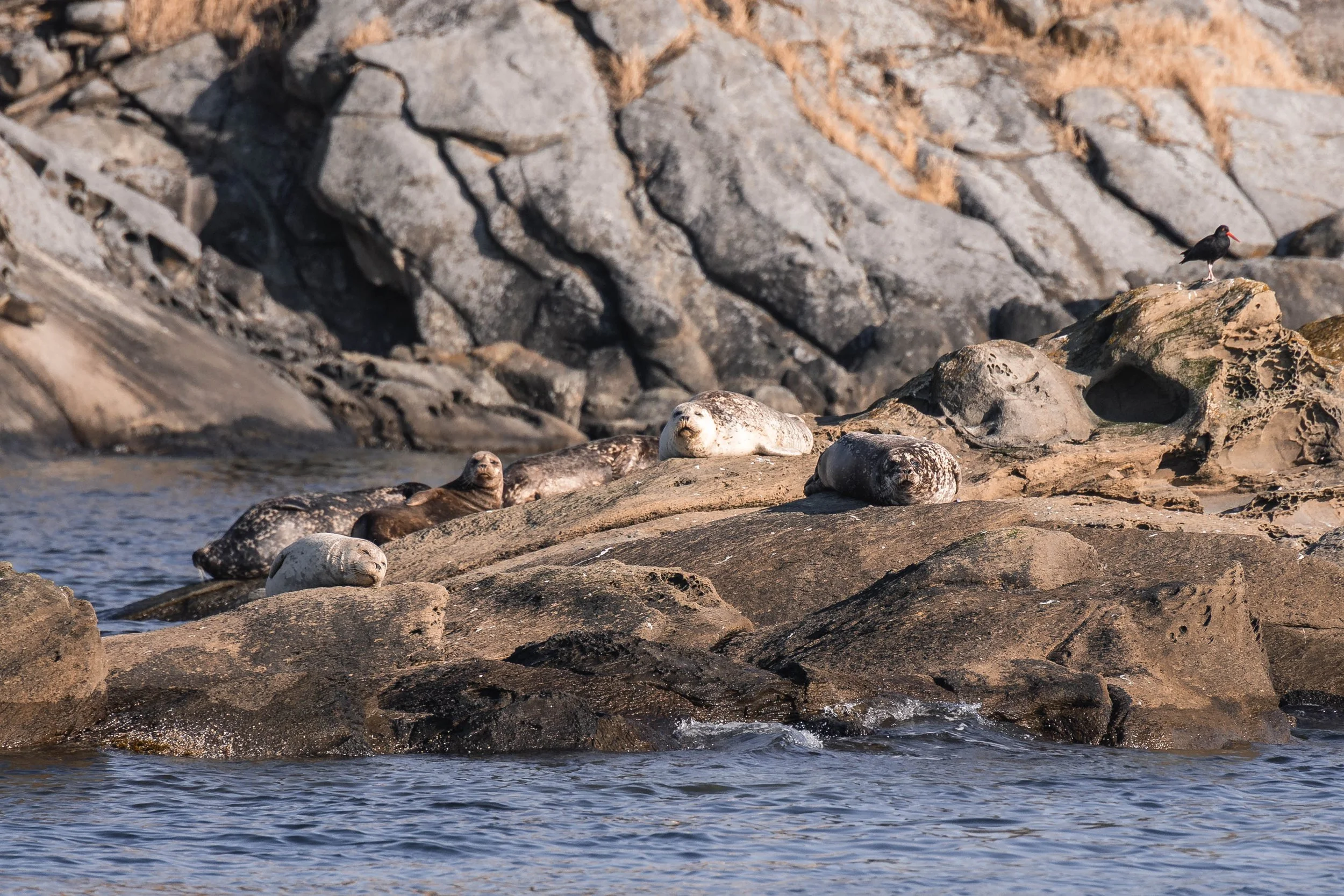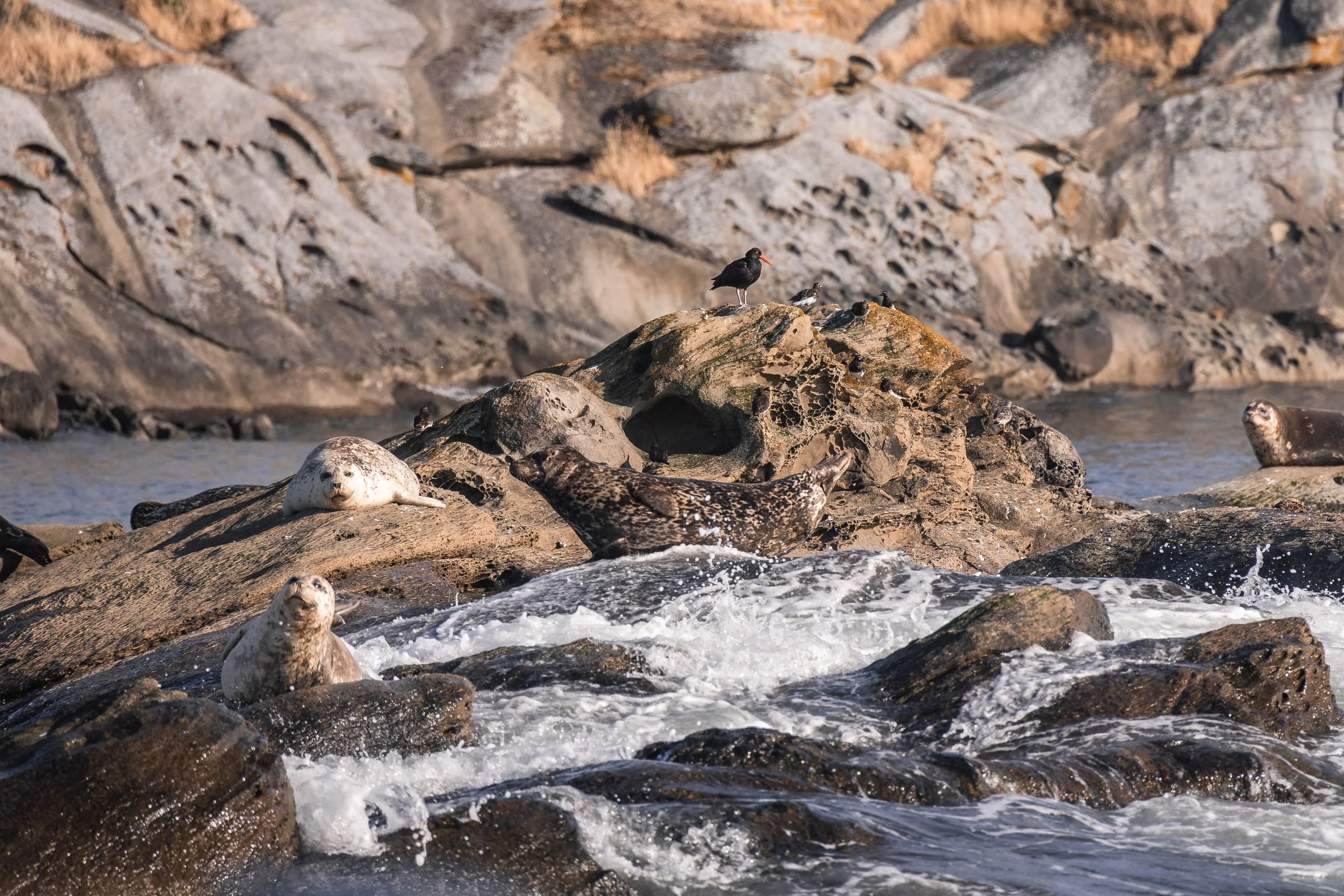July 22, 2025, 3:30PM - Spending time with the T046s and T037A1, plus Fallen Knight and Strike the Humpbacks!
Today’s tour offered guests a glimpse into the social worlds of some of the most iconic marine species in the Salish Sea.
Our journey began just off the Sunshine Coast, where we encountered a unique group of Bigg’s (transient) killer whales: the T046 family traveling alongside a solitary female, T037A1. Bigg’s orcas are known for their tightly knit, matrilineal family groups, where offspring stay with their mothers for life. But what made this encounter especially fascinating was the presence of T037A1, who is not a member of the T046 matriline.
T037A1 Inyo ♀ (2007)
T122 Centeki ♀ (~1982)
T046D Strider ♂ (2000)
T046E Thor ♂ (2003)
T046F Loki ♂ (2012)
T037A1, a mature female, has spent much of her adult life roaming independently. While this might sound solitary, it’s actually not uncommon among Bigg’s Orca. Interactions between unrelated groups like this are also not rare, although this particular combination of whales is a first for us! T037A1 Inyo is often seen travelling with other unrelated groups of whales, which makes sense given how social orca are.
Just like humans, orcas lead rich social lives. These alliances, even if short-term, help solitary individuals stay connected within a broader social network. In the case of T037A1 and the T046s, we observed synchronized surfacings and tight formations that suggested a mutual comfort and possibly a longer-standing relationship than just a passing encounter. It’s an exciting reminder that we’re still learning about the social dynamics of these intelligent predators, especially when it comes to the interactions in the Biggs population.
Next, we shifted our focus to a different set of travellers: two humpback whales known as Fallen Knight (BCX0915) and Strike (BCX1675). Both of these individuals are female and have been identified through photo-identification by researchers working in the Salish Sea.
While humpbacks are often considered more solitary than orca, associations do occur, especially among females. These associations are sometimes brief, but research suggests that pregnant females may form longer-term bonds during their migration and feeding periods. Why? The answer likely lies in energy efficiency and mutual benefit.
Pregnancy in humpbacks is energetically costly. These massive mammals must consume thousands of pounds of food during the feeding season to sustain themselves, and their growing calves, through a migration that can exceed 5,000 kilometres. Associating with another female can provide several advantages: safety in numbers, cooperative feeding opportunities, and the potential to share information about rich foraging grounds.
As we watched Fallen Knight and Strike surface and dive in unison, we were witnessing a powerful example of social strategy. Whether their bond is fleeting or more enduring, their teamwork highlights the complex lives these whales lead beyond the surface.
The tour continued with a stop at Snake Island, a rocky outcrop teeming with life. Here, Harbour Seals hauled out on the sun-warmed rocks, their mottled coats blending in with the seaweed-covered shoreline. These seals are the most commonly seen pinnipeds in our region and are a keystone species in the coastal food web.
Harbour seals play a dual role in the ecosystem. As predators, they help control populations of fish and invertebrates. As prey, they are a primary food source for Bigg’s killer whales, the very orcas we saw earlier in the tour. This delicate predator-prey relationship keeps populations in check and maintains the ecological balance of the Salish Sea.
Watching these seals lounging at low tide, it’s easy to forget the high-stakes survival strategies they rely on daily: camouflaging against predators, choosing safe haulouts, and teaching their pups how to swim and hunt in a dangerous world.
Our last stop brought us to the Gabriola Bluffs, where seabirds clung to the steep sandstone cliffs. Among them, cormorants, all three species; brants, pelagic and double-crested, were tending to their nesting sites. These birds, with their long necks and streamlined bodies, are expert divers, capable of plunging deep underwater in pursuit of fish.
Nesting on sheer cliffs protects from ground-based predators and access to rich feeding grounds just offshore. Their presence is a clear indicator of a healthy marine environment, as cormorants are sensitive to changes in fish populations and water quality. Seeing their dark silhouettes against the blue sky was a fitting close to a day spent immersed in the interconnected lives of marine animals.
Every trip into the Salish Sea reveals new insights into the lives of whales, seals, and seabirds. From the social alliances of transient orca to the quiet companionship of humpbacks, and the essential role of seals and seabirds in the ecosystem, today’s tour highlighted just how interconnected life is in our coastal waters.
We’re grateful for the opportunity to witness these moments and to share them with our guests. Please enjoy all the photos taken throughout the tour by the onboard Marine Naturalists Desarae Poier and Jordan Robinson available below!
T037A1 Inyo travelling wih T046E Thor. Photo by Desarae Poier.
T046F Loki surfacing by themselves. Photo by Desarae Poier.
T122 Centeki surfacing in the waves. Photo by Desarae Poier.
A great look at T122 Centeki showing off her unique saddle patch. Photo by Desarae Poier.
T046E Thor surfacing beside T037A1 Inyo. Photo by Desarae Poier.
Look at the unique saddle patch on T037A1 Inyo. Photo by Desarae Poier.
T046D Strider (left), T046E Thor (middle) and T046F Loki (right) all surfacing together. Photo by Desarae Poier.
A great look at T046D Striders dorsal fin. Photo by Jordan Robinson.
T046E Thor traveeling beside T037A1 Inyo. Photo by Jordan Robinson.
T037A1 Inyo and T046E Thor travelling together. Photo by Jordan Robinson.
Fallen Knight’s dorsal fin. Photo by Desarae Poier.
Fallen Knight’s unique tail as she dives. Photo by Desarae Poier.
Fallen Knight going for a dive. Photo by Desarae Poier.
Strikes robust dorsal fin. Photo by Desarae Poier.
The underside of Strike’s tail. Photo by Desarae Poier.
Fallen Knight going for a dive. Photo by Desarae Poier.
Fallen Knight. Photo by Jordan Robinson.
A juvenile Bald Eagle on the tree. Photo by Desarae Poier.
Harbour Seals spending time on Snake Island. Photo by Jordan Robinson.
Can you spot all three species in this photo? (Harbour Seal, Oyster Catcher, and Black Turnstones) Photo by Jordan Robinson.
A cormorant flying by at the bluffs. Photo by Jordan Robinson.
A lovely look at the Gabriola Bluffs. Photo by Jordan Robinson.
A Pigeon Guillimot flying by with dinner. Photo by Jordan Robinson.
Bald Eagle on a treetop perch. Photo by Jordan Robinson.
Happy Whale Watchers on Kula. Photo by Jordan Robinson.

